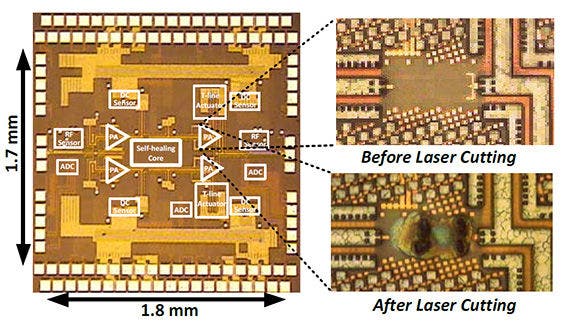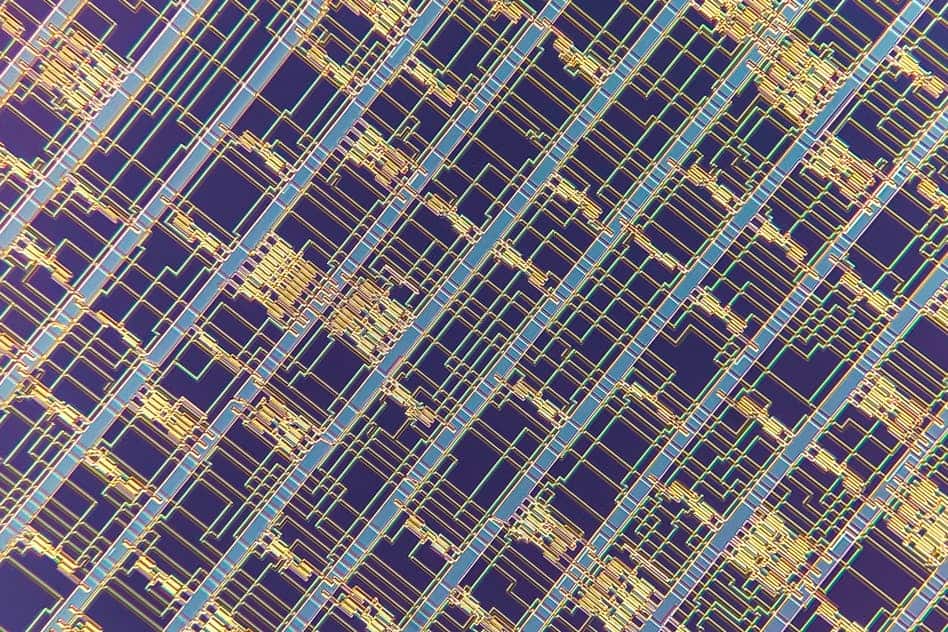Imagine if the chip in your phone of laptop could not only defend, but also repair itself on the fly, recovering from simple scratches or battery issues to total transistor failure. It may sound like science fiction, but it is exactly what a team from CalTech has done.

The team working at the High-Speed Integrated Circuits laboratory in Caltech’s Division of Engineering and Applied Science, has demonstrated this self-healing capability in tiny power amplifiers. The amplifiers were actually so tiny that 76 of them could fit inside a single penny – along with everything they need to repair themselves. In order to test their experiment, researchers zapped the chips multiple times with a high power laser, and then observed as the chips automatically developed a work-around in a fraction of a second.
“It was incredible the first time the system kicked in and healed itself. It felt like we were witnessing the next step in the evolution of integrated circuits,” says Ali Hajimiri, the Thomas G. Myers Professor of Electrical Engineering at Caltech. “We had literally just as transistors, and it was able to recover to nearly its ideal performance.”
The team’s results will appear in the March issue of IEEE Transactions on Microwave Theory and Techniques.
At the moment, chips are extremely vulnerable; a single mechanical or electric fault can render it useless, so the CalTech engineers wanted to give integrated-circuit chips a healing ability akin to that of our own immune system – something that is able to discover and treat the fault as soon as possible. The power amplifier they devised employs a multitude of robust, on-chip sensors that monitor temperature, current, voltage, and power. The information from the sensors feeds into a custom-made application-specific integrated-circuit (ASIC) unit on the same chip, a central processor that acts as the “brain” of the system. The “brain” then analyzes the amplifier’s overall performance, figuring out where it has faulted and needs to be fixed. What’s interesting is that this mechanism does not operate on algorithms that know how to respond to every possible scenario, but rather draws conclusions based on the aggregate response of the sensors.
“You tell the chip the results you want and let it figure out how to produce those results,” says Steven Bowers, a graduate student in Hajimiri’s lab and lead author of the new paper. “The challenge is that there are more than 100,000 transistors on each chip. We don’t know all of the different things that might go wrong, and we don’t need to. We have designed the system in a general enough way that it finds the optimum state for all of the actuators in any situation without external intervention.”
They have described four main categories of damage that chips suffer: static variation that is a product of variation across components, long term ageing, short-term variations that are induced by environmental conditions such as changes in load, temperature, and differences in the supply voltage, and accidental or intentional mechanical damage that causes a destruction of the circuits.
The implications of this project are absolutely huge.
“Bringing this type of electronic immune system to integrated-circuit chips opens up a world of possibilities,” says Hajimiri. “It is truly a shift in the way we view circuits and their ability to operate independently. They can now both diagnose and fix their own problems without any human intervention, moving one step closer to indestructible circuits.”







